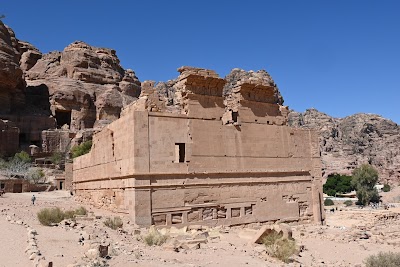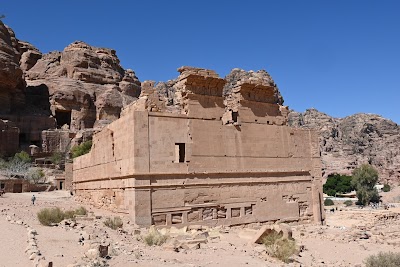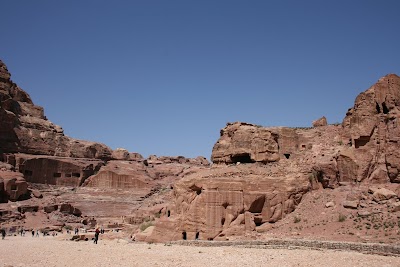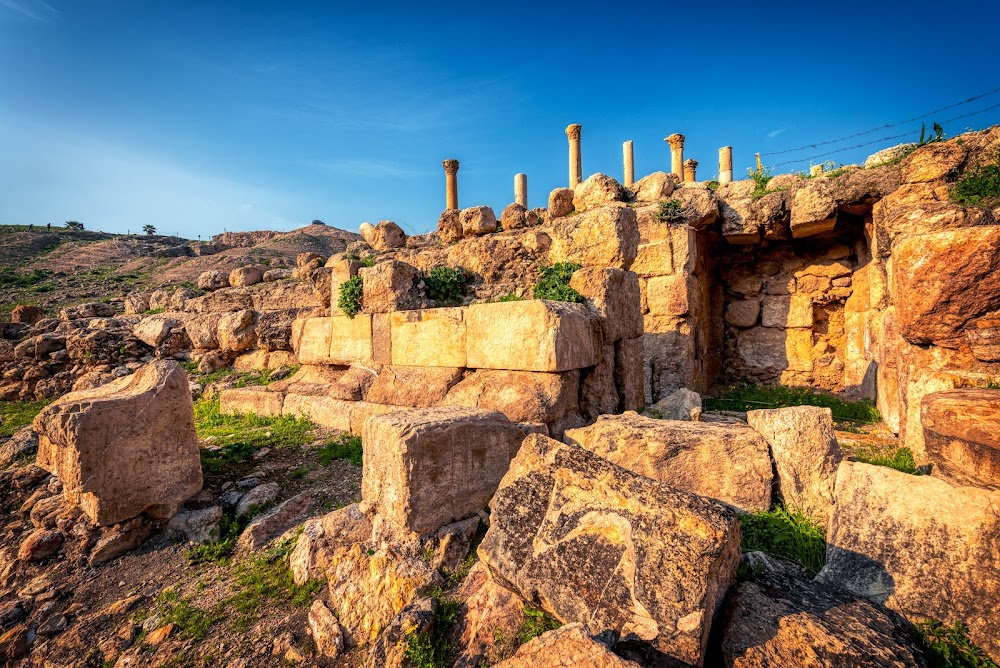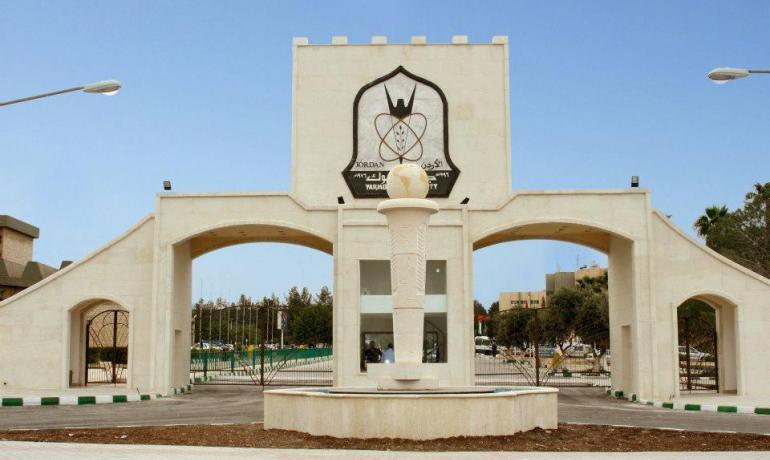Petra Archaeological Park (مدينة البتراء الأثرية)
Overview
Petra Archaeological Park, located in the southern region of Jordan, is one of the world's most iconic and cherished ancient cities. While the city of Irbid lies in the north of Jordan, Petra is closer to the charming town of Wadi Musa. Known as the "Rose City" for the stunning hues of the stone carved into its structures, Petra represents a mesmerizing journey back in time. Recognized as one of the New Seven Wonders of the World and a UNESCO World Heritage Site, it is an essential stop for history enthusiasts, architecture lovers, and curious travelers alike.
Petra's history is as rich and extensive as its breathtaking structures. Established around 312 BC as the capital of the Nabataean Kingdom, it thrived under the rule of the nomadic Nabataeans, who leveraged Petra's strategic location along the incense trade routes. The city blossomed into a vibrant trading hub, where spices, silks, and other valuable commodities were exchanged. Its importance only grew after the Roman Empire annexed Nabataea in AD 106. However, the city's prominence began to wane due to shifts in trade routes and devastating earthquakes, leading to its abandonment by the 7th century.
The architectural brilliance of the Nabataeans shines through Petra’s intricate rock-cut structures. The most famous of these is Al-Khazneh, or "The Treasury," which greets visitors with its grand façade carved directly into the striking red sandstone rock. Misnamed by Bedouins who believed it housed hidden treasures, this monument likely served as a royal tomb. Another must-see location is the Monastery, or "Ad-Deir," an equally impressive structure that sits high in the hills. Reaching the Monastery requires climbing around 800 steps, but the breathtaking views and sense of achievement make the effort worthwhile.
Beyond its monumental tombs and temples, Petra is also home to a sophisticated network of water systems, including dams, cisterns, and aqueducts that showcase the Nabataeans' advanced engineering skills. These innovations were crucial for the city's survival in such an arid environment, enabling residents to harness and store precious water resources. Exploring these lesser-known aspects of Petra provides a deeper understanding of the daily lives of its ancient inhabitants.
The journey into Petra begins at the Siq, a narrow, winding gorge that serves as the main entrance. Walking through the Siq, flanked by towering cliffs and vibrant colors, is an experience in itself. Along the way, you’ll discover niches that once held statues and remnants of intricate water channel systems, all testaments to the path's historical significance.
Visitors are also encouraged to spend time at the Petra Archaeological Museum and the Petra Nabataean Museum, both located within the park. These museums house a rich collection of artifacts, from pottery and sculptures to tools and inscriptions, offering further insights into the Nabataean civilization and the multifaceted history of Petra. They enhance your exploration of this ancient city, providing valuable context to the breathtaking sights.
In addition to its historical and architectural marvels, Petra is a haven for adventure and natural beauty. The expansive park offers a variety of hiking trails that lead to stunning viewpoints, providing sweeping vistas of the surrounding desert landscape. Whether you opt for a serene canyon walk or a challenging hike to the High Place of Sacrifice, the natural charm of Petra will undoubtedly leave a lasting impression.
Interesting facts about Petra abound. For instance, the city remained unknown to the Western world until Swiss explorer Johann Ludwig Burckhardt rediscovered it in 1812. Its popularity surged after being featured in the 1989 film "Indiana Jones and the Last Crusade," which showcased its stunning architecture to a global audience. Additionally, Petra is sometimes referred to as the "Lost City" because it lay hidden beneath desert sands for centuries.
When planning your visit to Petra, it’s advisable to allocate at least one full day to explore the major sites within the park. Many travelers choose to stay for multiple days to fully absorb the history, beauty, and serene grandeur of this ancient wonder. To enrich your experience, consider hiring a local guide who can share expert knowledge and captivating anecdotes about the site’s storied past.
Petra Archaeological Park is a destination that transcends time, offering an immersive journey into the ingenuity, culture, and artistry of a lost civilization. Whether you're marveling at the majestic structures, reflecting on the skillful water systems, or simply soaking in the atmosphere of this ancient city, Petra is sure to captivate and inspire every visitor. Be sure to bring comfortable walking shoes, a camera, and an adventurous spirit as you prepare to explore one of humanity's most captivating architectural achievements.


